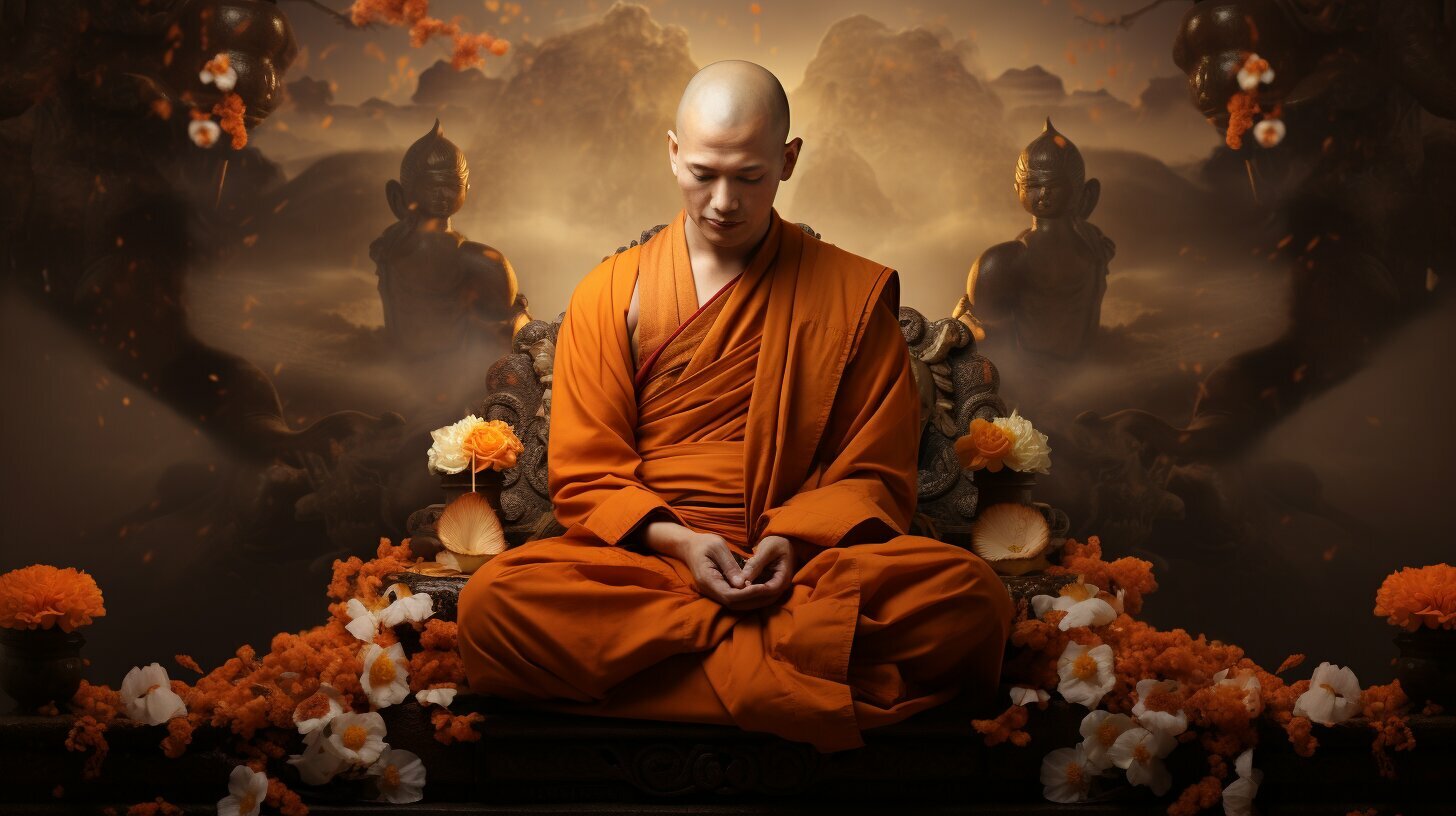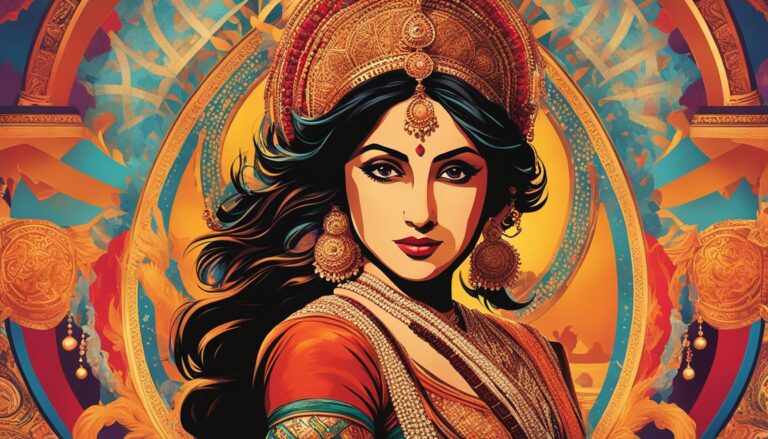Unraveling the Mystery: Why Do Buddhist Monks Wear Orange?
Buddhist monks have long been recognized for their iconic orange robes, but have you ever wondered why orange is the color of choice for these spiritual practitioners? In this section, we will delve into the fascinating reasons behind why Buddhist monks choose to wear vibrant orange robes. We will explore the significance, symbolism, and cultural traditions associated with this distinctive attire.
Key Takeaways:
- Orange robes symbolize simplicity and detachment from materialism.
- The color choice was influenced by the availability of dye at the time.
- Shaving of the head further represents simplicity and detachment.
- In India, monks color their robes with red earth to emphasize their connection to the Earth.
- The robes create a visible way of uniformity, allowing monks to be identified by their vocation rather than their appearance.
The Significance of Orange Robes in Buddhism
The color of the robes worn by Buddhist monks holds profound meaning within the context of Buddhism, representing far more than just a fashion choice. The vibrant orange hue of the robes carries deep symbolism and significance, reflecting the core principles and values of the Buddhist tradition.
In Buddhism, the color orange is associated with the concept of simplicity and detachment from materialism. The choice of orange robes by Buddhist monks is a deliberate expression of their commitment to leading a minimalist lifestyle. By renouncing worldly possessions and wearing robes of a vibrant hue, they symbolize their detachment from material desires and their focus on inner growth and spiritual development.
Not only do the orange robes represent simplicity, but they also serve as a visual reminder of the interconnectedness between human beings and the Earth. In India, monks often color their robes with red earth, emphasizing their belief that the body is an extension of the planet. By wearing robes of the Earth’s color, they embody the understanding that all beings are interconnected and share a common bond with the world around them.
Furthermore, the orange robes create a sense of unity and identification among Buddhist monks. By wearing the same attire, they strip away individual attributes and ego, allowing their vocation and dedication to the path of Buddhism to be recognized. The robes serve as a visible representation of their commitment to a higher purpose and remind them of the collective nature of their spiritual journey.
| Key Points: |
|---|
| The vibrant orange color symbolizes simplicity and detachment from materialism. |
| The choice of orange robes represents renunciation of worldly possessions. |
| Orange robes serve as a visual reminder of the interconnectedness between humans and the Earth. |
| By wearing the same attire, Buddhist monks foster unity and identification. |
Historical and Cultural Origins of Orange Robes
To understand why Buddhist monks wear orange robes, it is essential to delve into the historical and cultural context that shaped this tradition. In Southeast Asia, the tradition of wearing orange robes dates back centuries, and the color was chosen mainly because of the availability of dye at the time. The robes also create a visible way of uniformity and intention, stripping away personal attributes and allowing the monks to be identified by their vocation rather than their appearance.
In India, monks largely color their clothes with red earth because they want to exist with the understanding that the body is just an outcrop of the planet. The color of the robes serves as a reminder that the body is connected to the Earth. This connection to nature is a fundamental aspect of Buddhist teachings, emphasizing the impermanence of life and the interconnectedness of all beings.
“The orange robes represent the renunciation of worldly desires and the commitment to a simple and disciplined life. Through the act of wearing these robes, Buddhist monks symbolize their dedication to their spiritual path.”
Furthermore, the practice of shaving the head is deeply intertwined with the choice of orange robes. By shaving their heads, monks embody simplicity and detachment from vanity and material possessions. Bald heads, along with the vibrant orange attire, serve as a visual representation of the monk’s commitment to a minimalist lifestyle. These practices reinforce the principle of non-attachment, encouraging monks to let go of ego and worldly attachments in their pursuit of spiritual enlightenment.
Monastic Unity and Purpose
The adoption of orange robes not only represents personal commitment but also fosters unity within the monastic community. The color orange serves as a unifying symbol, eliminating personal attributes and highlighting the shared purpose and vocation of the monks. In a world often divided by appearances and societal hierarchies, the orange robes create a visible reminder of the shared path and intentions of those who wear them.
- Symbolism of orange robes
- Connection to nature and impermanence
- Renunciation of worldly desires and dedication to spiritual path
- Embodying simplicity and detachment through shaved heads
- Unifying symbol fostering monastic unity and purpose
In conclusion, the choice of orange robes in Buddhism is steeped in historical, cultural, and spiritual significance. The vibrant color symbolizes detachment and simplicity, while the practice of shaving the head reinforces these principles. The robes create a visible representation of the monk’s commitment to a minimalist lifestyle and foster unity among the monastic community. By embracing the challenges and discipline associated with wearing orange robes, Buddhist monks cultivate awareness, presence, and grace in their lives.
| Section | Content |
|---|---|
| Section 1 | Introduction and overview |
| Section 2 | The Significance of Orange Robes in Buddhism |
| Section 3 | Historical and Cultural Origins of Orange Robes |
| Section 4 | The Ritual of Shaving Heads and Simplicity |
| Section 5 | Cultivating Awareness and Grace Through Orange Robes |
The Ritual of Shaving Heads and Simplicity
The act of shaving their heads and donning orange robes is an integral part of the monastic life for Buddhist monks, carrying profound symbolism and serving as a reminder of the pursuit of simplicity and detachment. By renouncing their hair, monks let go of vanity and attachment to physical appearance. It is a physical manifestation of their commitment to a minimalist lifestyle, symbolizing the eradication of ego and the embrace of humility.
The ritual of shaving heads is not just a practical matter, but a spiritual one. It signifies a break from societal norms and expectations, allowing the monks to focus on their spiritual journey without distractions. Shaving the head also promotes a sense of unity among the monastic community, as they all share the same outward appearance, regardless of their individual backgrounds or identities.
The orange robes worn by Buddhist monks further emphasize the ideals of simplicity and detachment. The vibrant color represents the burning intensity of a monk’s commitment to the path of enlightenment. The robes serve as a visual reminder to both the monks themselves and to others of their dedication to a life free from material possessions and worldly desires.
| Symbolism of Shaved Heads and Orange Robes in Buddhism | Meaning |
|---|---|
| Shaved heads | Renouncement of vanity and attachment to physical appearance |
| Orange robes | Symbol of simplicity, detachment, and commitment to the path of enlightenment |
Embracing Minimalism for Spiritual Growth
Through the ritual of shaving heads and donning orange robes, Buddhist monks embrace a life of minimalism to facilitate their spiritual growth. By living with only the bare essentials, they learn to detach themselves from material possessions and find contentment in the present moment. This intentional simplicity allows them to focus their energy on the pursuit of wisdom, compassion, and enlightenment.
Monks who choose to join the monastic life do so out of curiosity and a deep desire to understand the mysteries of life. They willingly undertake the challenges of wearing robes and maintaining simplicity, recognizing that it is through these challenges that they cultivate awareness, presence, and grace in their lives.
In conclusion, the ritual of shaving heads and donning orange robes is not just a tradition in Buddhism, but a powerful symbol of the monk’s commitment to simplicity, detachment, and spiritual growth. It serves as a constant reminder of their dedication to their path and their quest for inner peace and enlightenment.
Cultivating Awareness and Grace Through Orange Robes
Embracing the challenges of wearing orange robes and maintaining simplicity, Buddhist monks cultivate a unique awareness and grace that permeate their spiritual journey. The vibrant orange robes they don are not merely a fashion statement but hold profound symbolism and purpose.
In Southeast Asia, the tradition of wearing orange robes dates back centuries, and the color was chosen mainly because of the availability of dye at the time. These robes symbolize simplicity and detachment from materialism, reminding monks to focus on the higher spiritual path rather than the trivialities of the world.
When the monks shave their heads, they further embody the essence of simplicity and detachment. In India, some monks color their clothes with red earth, emphasizing their connection to the Earth and the impermanence of the body. This visible uniformity and intentional appearance strip away personal attributes, allowing the monks to be identified by their vocation rather than their appearance.
By donning these orange robes and embracing a minimalist lifestyle, monks embark on a transformative journey. They learn to relinquish attachments, cultivate mindfulness, and embody grace in every aspect of their lives. The challenges they encounter along the way serve as constant reminders of their commitment to the path of spiritual enlightenment.
FAQ
Why do Buddhist monks wear orange robes?
Buddhist monks wear orange robes for various reasons, including the symbolism of simplicity and detachment from materialism. The color orange was chosen mainly because of the availability of dye at the time.
What is the significance of orange robes in Buddhism?
The orange robes worn by Buddhist monks symbolize detachment, simplicity, and unity among the monastic community. It serves as a visible representation of their commitment to a minimalist lifestyle.
Why do Buddhist monks shave their heads?
Buddhist monks shave their heads to further embody simplicity and detachment. It is a ritualistic practice that complements the wearing of orange robes and signifies a renunciation of material desires.
What is the historical and cultural origin of orange robes?
The tradition of wearing orange robes in Buddhism dates back centuries and is influenced by historical and cultural practices. The choice of orange as the preferred color for monastic attire may have been influenced by the availability of dye at the time.
How do orange robes cultivate awareness and grace in the lives of Buddhist monks?
By embracing the challenges of wearing orange robes and maintaining simplicity, Buddhist monks cultivate mindfulness, presence, and grace in their lives. The robes serve as a reminder of their vocation and help strip away personal attributes.






